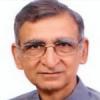Pragya Thakur, Malegaon blast accused out on bail on health ground, is at the centre of the present turmoil around Nathuram Godse. The story begins with her filing nomination papers for Bhopal Loksabha constituency. The criticism came up that how can an accused of act of terror be a candidate of elections. Narendra Modi; jumped into the controversy stating that calling her a terrorist is the insult to the five thousand year old glorious civilization and that no Hindu has ever indulged in an act of terror. As per him and his party the earlier coining of the term Hindu terror, Saffron terror, in the wake of series of blasts which took place between 2006-2008; was to defame Hindus.
The next link in the whole controversy comes with big film star, now turned politician, Kamal Haasan stating that Nathuram Godse was the first terrorist of Independent India. When he was attacked for stating this, slippers were thrown at him in a public meeting. He further confirmed that every religion has its own terrorists. Pragya Thakur, the new recruit of BJP, went out to pour her heart stating that Nathuram Godse was a nationalist, is a nationalist and will remain a nationalist. Her statement threw the BJP in tizzy and she was asked to apologize. She was not the only one coming forward to uphold Godse and express their real and deeper ideological stand. Anantkumar Hegde, the current Union Minister, who has been asking for change in Constitution, stated that there is no need to be apologetic about Godse any longer. While another Karnataka BJP leader Nalin Kumar Kateel also came in Godse’s defense. To cap it all BJP Madhya Pradesh media in charge Anil Saumitra said that Mahatma Gandhi was father of Pakistan. Saumtira has been suspended while others have been asked to apologize and notices have issued against them by BJP.
Narerndra Modi surpassed hypocrisy when he said that while Thakur has apologized, he will never be able to forgive her! While some reprimand has been administered against her, she continues to be BJP candidate for Bhopal constituency. Is BJP really serious about taking action against those upholding Godse? It is not the first time Godse is being upheld. Many a times in the past, those belonging to BJP-RSS-Hindu nationalists have expressed their praise for Godse. One recalls the RSS Sarsanghchalak Rajendra Singh, alias Rajju Bhaiyya, stating that Godse’s intentions were right, he believed n Akhand Bharat (expanded India incorporating Afghanistan Myanmar, Srilanka etc.) Then we have Sakshi Maharaj, the present BJP MP, who has been given ticket to fight the election again, who had also called Godse as Nationalist. Despite such ideas he is part of BJP. During last few years glorification of Godse, temple for him in Meerut, demand for land for his memorial and busts are gaining strength in the country.
When he is called a nationalist, in a way what is hidden from the word is its essential prefix, Hindu to the word nationalist. Godse was a Hindu nationalist for sure. It is only from Hindu nationalists, RSS and its affiliates that Godse is upheld and praised. BJP is in a dilemma. They do hold on to Hindu nationalism, they have deeper sympathy for what Godes did; still they cannot support it openly. The dilemma is that BJP does pursue the path of Hindu nationalism, in contrast to Indian nationalism as propounded in our constitution. Why can it not openly support Godse and his assassinating Gandhi? One recalls that after the murder of Gandhi sweets were distributed in RSS shakhas. One recalls that RSS chief even at that time expressed his sorrow and stopped RSS work and declared thirteen days mourning. One recalls that RSS was banned by Sardar Patel for spreading hatred in the society. Still the point remains that that all those upholding Godse cannot yet openly say so. That is not yet ‘politically correct’ for BJP. This is what the BJP line is. Support Godse’s nationalism internally but do not say so openly. The reason is Gandhi cannot be criticized and bypassed in the country. His contribution in making of modern India, his central mission of cultivating fraternity, cutting across the lines religion, region and language are too profound to be ignored. The path delineated by him, the one of non violence has captured the imagination not only of the country but of the whole World. His campaign against untouchablity had deeper impact. His contribution in this direction was in the line of what Ambedkar wanted. His acting as ‘one man army’ in the sectarian violence has been a landmark in the story of India and the World!
So BJP, while pursuing Hindu nationalism has to make the show of respecting Mahatma. Very conveniently it has made him symbol of ‘Swatchta Abhiyan’ (cleanliness campaign), bypassing Gandhi’s central mission of Hindu Muslim unity and his path of Indian nationalism. What we are witnessing on one hand is the contradictions of BJP on the electoral arena and its long term goals. In electoral arena, to make a success it is BJP’s compulsion to uphold Gandhi, while all its major leaders and workers are trained in the values of Hindu nationalism, in its shakhas and training camps. In its training module Savarkar, the progenitor of HIndutva Hindu nationalism, has a pride of place, while Gandhi is presented as appeaser of Muslims and the one who was responsible for partition of the country. Godse was ardent follower of Savarkar. Savarkar was also a murder accused along with Godse but escaped the punishment in the absence of any corroborative evidence.
Savarkar-Godse duo is looked up among most of the followers of Hindutva ideology. That’s what explains the spontaneous outbursts of the likes of Sakshi maharaj, Anantkrishna Hegde and Pragya Thakur. BJP is compelled to make the show of speaking against them, bowing to electoral and global compulsions, while letting them thrive in the party in various capacities!






Comments
Add new comment